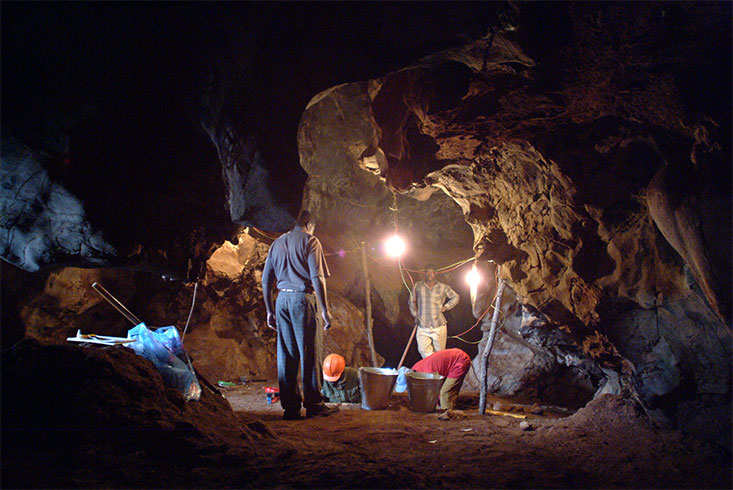Exploring fossiliferous cave deposits in Central Africa - flora, fauna, chronology, monsoon cyclicity and the evolution of modern African mammals
In Central Africa, depositional environments that could provide fossils and other habitat evidence are almost completely absent. The deeper history of the Zambezi ecozone is therefore extremely poorly understood in terms of its timing and the interactions of climate, habitat and life. Recently discovered sequences of well-dated fossil-bearing cave deposits in Zambia now allow, for the first time, an integrated analysis of fossil vertebrate faunas and floras (pollen from speleothems) within a defined time structure, which can be determined from the abundant uranium-rich speleothem layers intercalated between the fossil-bearing horizons.

Interactions in the Middle Pleistocene of the highlands of Central Africa are studied to advance a better understanding of habitat oscillations and their influence on the fauna and flora of the Zambezi ecozone over time. The combination of different sources of information from well-dated temporally diverse sedimentary bodies enable
- nowhere else possible insights into the deep history of a vast, currently diverse African ecosystem,
- the determination of his age position,
- understand the influence of climatic change (water availability, monsoon cyclicity) on this ecosystem and its evolution,
- Investigate the relationships between ecological change, evolution and biogeography of the mammals of Central Africa; and
- indirectly advance the understanding of the palaeoecological and biochronological context of highly significant already known fossil hominids of the same age from Zambia.

